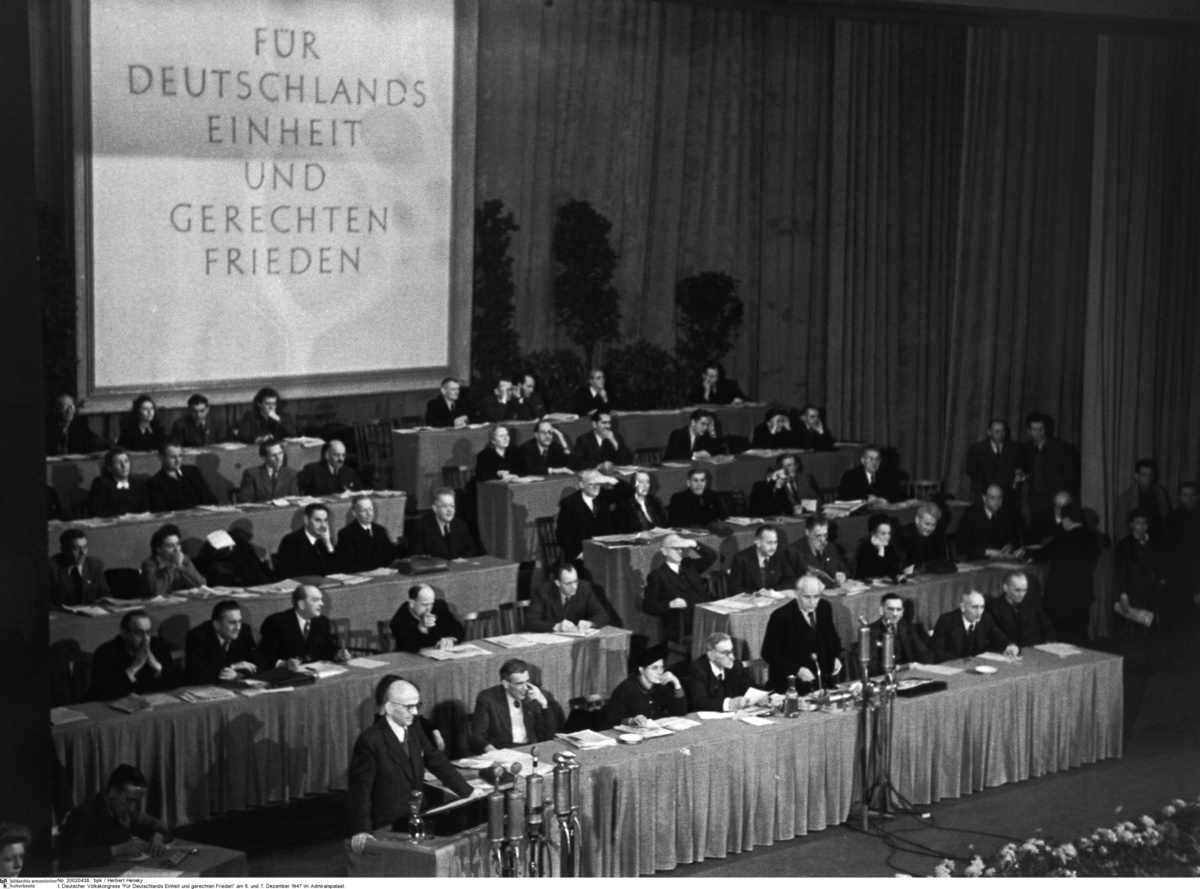Abstract
During the London Conference of Foreign Ministers in late November 1947, it became evident that the Western Allies were tending towards a Western solution to the German question. The SED responded by calling for an all-German “People’s Congress for Unity and a Just Peace” in the Soviet occupation zone. The SED aimed to exert pressure on the London negotiations and strengthen the Soviet position. The SED sought to present the division of Germany as the fault of the West and attempted to portray itself as the great champion of German unity. The First German People’s Congress – to which representatives of parties and mass organizations, works councils, farmers' associations, and artists and scientists from all occupation zones were invited – took place in the Eastern sector of Berlin on December 6-7, 1947. Of the 2,000 participants, most of whom came from the Soviet occupation zone and East Berlin, 605 were SED delegates. Although the Western Allies had prohibited residents of the western zones from attending the People’s Congress, some western zone representatives did take part, although not without repercussions. The People’s Congress was supposed to act as a united German pre-parliament, and its first demands of the London Conference were the negotiation of a peace treaty and the formation of a united German government that included “all democratic parties.”
